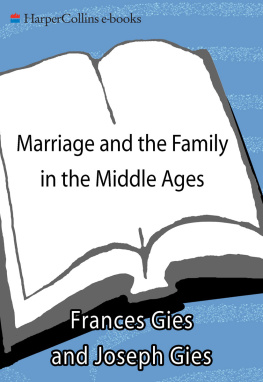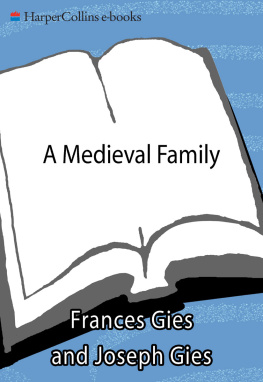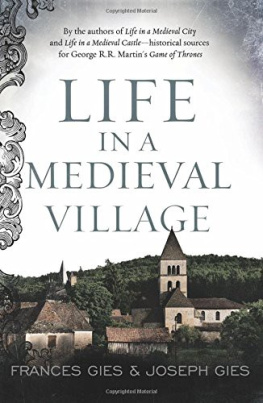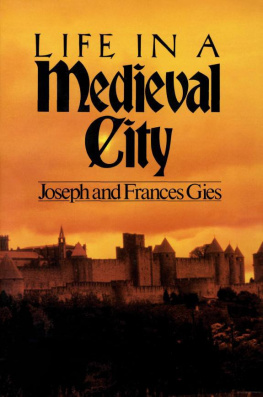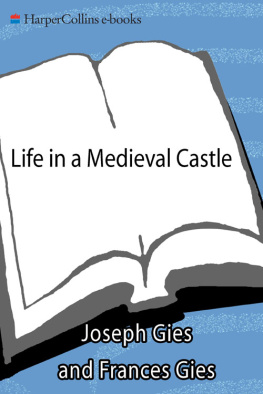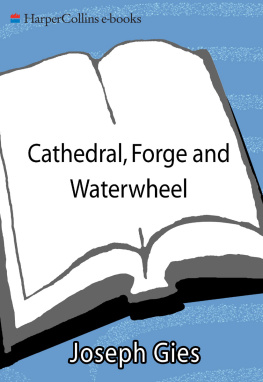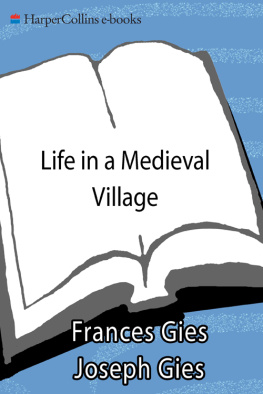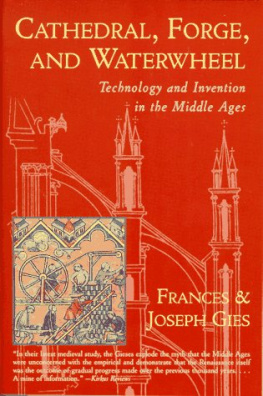Historians Discover the Family
No element in social history is more pervasive than the family, the universal environment where human beings learn to eat, walk, and speak, and acquire their sense of identity and modes of behavior. Every culture that we know of, past or present, has included the institution of the family, a necessity for survival and common denominator of the society.
The family today, changing even as we write, is the product of human history, its evolutions and revolutions. Some of the events that have made their mark on the family have been relatively swift and dramatic, such as the Industrial Revolution, whose effects have been repeatedly catalogued and analyzed. Others have been slow and obscure, like the massive changes that occurred during the thousand years of the Middle Ages. These have received less attention, yet in sum they transformed the family in significant and enduring ways.
In investigating the history of the family, a problem is encountered at the outset: the ambiguity of the very term family. In modern usage, the word has three meanings: a lineage or line of descent; a given persons living biological relations, including parents, siblings, grandparents, aunts, uncles, and cousins, whether co-resident or not; and finally, most commonly, a parent or parents and children living togetherthe nuclear, conjugal, or simple family, constituting a household. We habitually identify the conjugal family with the household because in modern society they typi Does the household include all unrelated persons living under the same roof, or all related persons living on the same property but in separate dwellings?
The word family in the sense of residential and biological unit is relatively new. Before the eighteenth century no European language had a term for the mother-father-children grouping. The meaning of the Latin cognate, familia , from a common Indo-European word signifying house, persisted from Roman times throughout the Middle Ages into the early modern period: the people who lived in a house, including servants and slaves. Usually the familia was large, and sometimes the majority of members were biologically unrelated, as for example, in the familia of a king, a great lord, or a bishop. Relationships of consanguinity played an important part in the society of the past, a more important part than they do today, but family boundaries were more blurred. The conjugal unit did not exist in isolation as it does today; therefore it did not need a name.
Neither historians nor anthropologists have ever developed a general term for the family outside the conjugal unit. Extended family, sometimes incorrectly used, properly refers to a kind of household, that is, to related persons living under the same roof, including brothers, widowed parents, nephews, nieces, or others outside the parent-child relationship. For the broader family group, composed of a variety of relatives not sharing a residence, no general term exists, though anthropology has provided terms for certain specific forms of it. This larger family group, an entity very important in pre-industrial society, might be called the supra-family.
The study of kinship and the family was initiated barely a century ago by a trio of brilliant amateur anthropologists, J. F. McClennan and Sir Henry Maine of England, and Lewis Henry Morgan of the United States. They were followed by sociologists, of whom one of the earliest, Frdric Le Play of France, an engineer by profession, was also an amateur. In 1871 Le Play published a study of the European family of the recent past that extolled the stem family, in which three generations lived together, parents, A conservative social reformer, Le Play recommended a return to the old ways for the good of society, morality, and the family. Much of the study of the family in subsequent years has been concerned with correcting Le Plays picture of the pre-industrial family.
Nearly a century after Le Play, Philippe Aris, another amateura French Sunday historian (historien de dimanche) in his own wordsstimulated wide interest among both historians and the lay public by the publication of Centuries of Childhood , subtitled A Social History of Family Life (1960). Relying on iconographic and literary sources, Aris presented the thesis that the concept of childhood as a distinct phase of life did not develop until the sixteenth and seventeenth centuries, when the child became the center of the new, close-knit nuclear family. His evaluation of the modern family was not far removed from Le Plays: what the family had gained in privacy and intimacy was outweighed by what it had lost in sociability and community feeling. Aris parted company with Le Play by arguing that the nuclear family enforced conformity and so curbed rather than fostered individualism, and by viewing individualism as a desirable quality.
Ariss book proved a stimulus to academic historians. It was followed by three influential studies relating to the family. All dealt with the early modern pre-industrial period, two limited to England, the other to Western Europe, but all in some measure echoing Ariss thesis: Peter Lasletts The World We Have Lost: England Before the Industrial Age (1965), Edward Shorters The Making of the Modern Family (1975), and Lawrence Stones The Family, Sex, and Marriage in England 15001800 (1977). In the early 1970s Lasletts Cambridge Group for the Study of Population and Social Structure published a book, Household and Family in Past Time , and a series of
Thus the history of the family is a very new subdiscipline. Within it the early modern period (from 1500 to 1750) first received the lions share of scholarly attention. Since 1970, however, a number of able medieval historians have engaged in research on the family and related subjects in a variety of specific regions, social classes, and time frames. One general survey covers the entire medieval period: American scholar David Herlihys Medieval Households (1985). Numerous scholarly articles have dealt with special aspects or areas of the subject. We now know, if far less than we wish to know about the medieval family, far more than we did a generation ago.
A general approach to the subject of marriage and the family in the Middle Ages poses fundamental questions that may be summarized under ten somewhat arbitrary headings. These will supply the basic lines of inquiry for the present book.
First, concept: What was the contemporary perception of the family? How was it viewed and defined? Outside forces such as economic pressures and mortality rates might govern the actual size and shape of the family, but the ideal type, expressed in custom and inheritance law, exerted crucial influence on attitudes and relationships, as well as on actions: who married and at what age, who stayed home, who held a position of authority in the family.
Second, function: Sociologists define the function of the modern family as twofold: the socialization of the child, and the channeling of the adults sexual and emotional needs. In the past, however, the family had other very important roles. It functioned as a defense organization, a political unit, a school, a judicial system, a church, and a factory. Over the centuries these functions have been surrendered one by one to the great external institutions of modern society, the State, the Church, and industry.
Third, kind of kinship system: to which the family belongs. In Western society today the larger kinship groupsthe ancestral lineage and the network of living relativesare of limited importance. In the Middle Ages, as in most societies of the past, they loomed large. The kinship vocabulary adapted by historians from anthropology is not yet entirely fixed or entirely satisfactory, but a large descent group that claims a common ancestor is generally called a clan; a smaller descent group in which ancestry can actually be traced, a lineage. The network of an individuals relatives is called a kindred. A clan exists independently of its members and can own land and exert political power. A kindred, in contrast, has no existence as a separate body. It exists and acts only in relation to the individual. Kindred and clan (or lineage) can, and in the Middle Ages often did, co-exist.

